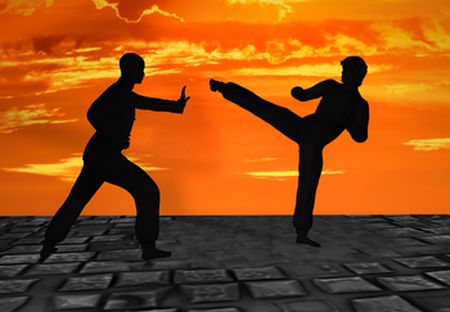PureInsight | March 1, 2022, By Qing Feng
[PureInsight.org] Chinese Martial Arts has a long history with many different schools. It is known as one of the four national quintessences of China and is loved by people of all ethnic groups.
Martial Arts was originally used as a means of military training and was closely related to ancient military affairs. It played a very important role in the age of cold weapons, and its characteristics of combat are obvious. In practice, its purpose is to kill, injure, and subdue an opponent. It often uses the most effective combat methods to force the opponent to lose the ability to resist.
From the perspective of cultivation, people live for fame and fortune, which means that people will compete and struggle for fame, fortune and sentimentality in human society. Moreover, the use of physical force sometimes cannot be avoided, perhaps this is how Martial Arts came about in society.
If we are not overly engrossed by the superficial categories of Martial Arts schools, various practice methods and concepts, we will find that the basic functions of Martial Arts are fitness, self-protection, defense against an enemy and victory. This is the lowest level of Martial Arts and something merely at the level of ordinary people. We have found that ‘Martial Arts’ at the everyday people’s level is only a skill, and the same is true of the combat styles in the West.
Real Martial Arts, however, should be called Martial Arts. In fact, these have far transcended the scope of art. It is a method of cultivating the Dao (Dao = Universal law), and there is a divine element behind it. We know that in real Martial Arts, martial virtue is stressed. There is a saying, “to practice Martial Arts, first learn how to be a man.” That is, a man of virtue.
Today, many people do not understand this, because they see that many people with bad character in the Martial Arts world are also very strong in the Martial Arts. In fact, they are at the level of ordinary people.
Martial Arts at this level is still just a skill of ordinary people, and have basically nothing to do with character cultivation. Martial arts at the everyday people’s level cannot be compared with the real Martial Arts at all.
Once Martial Arts transcend the level of ordinary people, it is a cultivation method, and is closely related to one’s xinxing (xinxing = ones moral character). One’s innate foundation is important in cultivation, which is to say, one’s virtue is critical—this goes without saying in real Martial Arts.
In real Martial Arts, the practitioner’s attachments to fame, fortune, and sentimentality will be cultivated away during the process of practicing Martial Arts. The more these human attachments are let go of, the greater one’s virtue. When cultivating away such attachments, one’s level will rise, together with one’s energy level.
Ordinary people oftentimes do not understand these principles. Ordinary people at the level of everyday people cannot understand true masters. What the true masters pursue is the Dao, something beyond the level of ordinary people.
I remember watching a documentary many years ago about a real Martial Arts master. He was hardly famous and was not known for ever “making a move,” but a few ordinary people who thought they were ‘masters’ were nothing before him.
His disciples claimed, “Master is the best in the world.” Yet this Martial Arts master’s response was, “Why are you so interested in being ‘first’ and ‘second’? Martial arts is about the Dao. It’s meaningless to be ‘first.’” What he said was correct. Yet, the combative mentality for cultivators practicing Martial Arts tends to be more stubborn, and is difficult to let go of. Therefore, very, very few people who practice Martial Arts are able to cultivate to success.
People who possess high-level Kung Fu only use their supernatural abilities when they strike, and when they do, they do so via another dimension. Therefore, everyday people who practice ordinary Kung Fu in society cannot keep up with such experts.
Chinese version: http://big5.zhengjian.org/node/270270
(Pureinsight)

